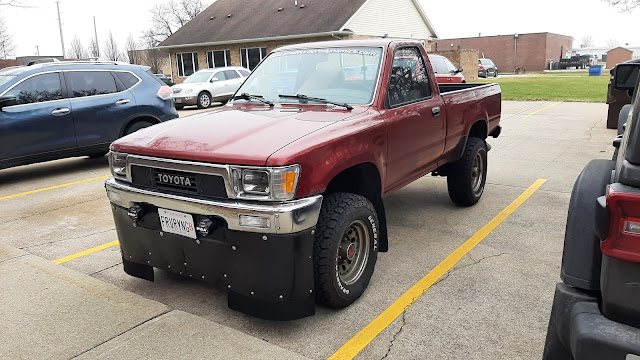Rear spoilers and wings still work even if a car has front-wheel drive.
The claim: Spoilers are only for RWD cars
since they make downforce at the rear.
 |
| This myth has been around for a long time. |
 |
| I couldn't find any examples of this misconception that didn't pile on additional myths. See if you can spot them all. |
 |
| This one can only be described as "confidently wrong." |
The reality: This myth is just one
representation of a larger misconception. Online commenters seem to be fond of
making pronouncements such as this, declaring with absolute certainty that some
device or other will or will not work in a certain way. Often, their comments
are accompanied by simple explanations. “That rear spoiler isn’t doing anything
for your car because it’s FWD.” Or, “The angle of your wing is wrong; you
should have a -5 degree angle from horizontal to make the most downforce.” Or, “Your
spoiler is too high because it needs to ‘reach up’ only to the Template and it
will create a locked vortex over the rear window and the air will ‘skip’ over
it as if there was body structure there and thus drag will be reduced” (this
one’s real, shockingly). Or, “Folding your mirror in is
just as good as removing it, maybe even better because the inward tapering of
the mirror body toward the window will recover pressure and disrupt the flow
less.”
Any time you see someone trying to explain something like
the behavior of a spoiler or wing (which have, in reality, very complex
interactions with air flow) in simple and absolute terms, run the other way.
The flow field around a car is anything but simple, as I
explained in an earlier post, and the complex interactions between various
parts and shapes of a car body mean it is only possible to generalize
the behavior of devices such as spoilers because so much depends on the actual
geometry of the specific car and device in question. The problem here is, a
statement such as “fitting that spoiler to this car may or may not reduce drag
and/or lift, we can’t say for sure what it will do and how large its effects will be without testing” is a much less satisfying
answer to someone’s question than a definitive “yes” or “no” with an
accompanying, easily-grasped explanation. This feeds into the fallacies of
predicting or intuiting flow patterns and thinking
it is possible to ascertain the effect of one shape or another on drag and lift
simply by looking at them. Neither is true.
 |
| Uh oh! Testing a rear spoiler on a FWD Prius. |
Back to the specific case of rear spoilers on FWD cars. Assuming
a spoiler design has been tested and is shown to reduce lift, the effects on
the car body are the same regardless of drivetrain: reduced lift is reduced
lift. The argument against spoilers on FWD cars seems to be that decreasing
lift/increasing load on the rear tires will not increase traction of the
powered wheels. First, this is an unwarranted generalization: depending on the
shape of the car and spoiler, a rear spoiler may very well reduce front lift in
addition to rear or have no effect on front lift because of the way it affects pressure (seriously, try it: I found that a 21mm spoiler lip on the
rear of the Prius above increased pressure more than a meter ahead of itself,
all the way up on the center of the roof). Second, the benefits of reduced lift
go far beyond simple traction of driven wheels; insisting that this is the only
benefit of low or negative lift misses the larger picture of vehicle stability and handling
as well as handling balance and pitching moment (how much the nose of the car
wants to rotate upward or downward), which are tremendously influenced by
aerodynamic lift and its interaction with the mass distribution of the car, its
suspension design, spring rates, tires, and a whole host of other things.
A good example of this can be found in a 1999 SAE paper by
Howell et al (“The Influence of Aerodynamic Lift on High Speed Stability,” SAE
1999-01-0651). The authors tested several cars with and without various
spoilers designed to change the rear lift (and, on one car, a front spoiler designed to increase front lift); after measuring the lift
coefficients in a wind tunnel, they had several test drivers perform emergency
lane changes at high speeds and rate each car’s handling and stability on a scale from 1 (poor)
to 10 (excellent). The cars with less difference between front and rear lift—and
more front lift than rear—were consistently rated better, regardless of which
end of the car had the drive wheels. The authors called this result “remarkable”
since the overall lift forces on the tested cars, even at high speed, were a
small fraction of the cars’ weights.
Of course, there’s a certain amount of subjectivity in that.
But that’s okay! One person’s preferred handling balance might not be the same
as another’s. You can tune your car to your liking by testing rear spoilers, rear wings, front spoilers (air dams), splitters, and undertrays—all of which can be used to
alter lift and lift balance. Don’t discount one or the other device out of hand
simply because your car is FWD (or RWD, or AWD). Identify your goals, build
some mockups, test them, and make something that works.
 |
| Seriously, it's not hard to do! Try it. |








Comments
Post a Comment